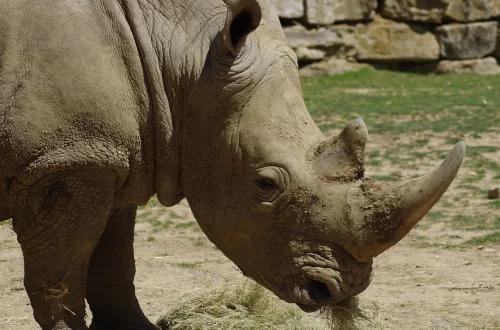
Understanding Cat Nail Shedding: Causes and Solutions for Pet Owners
Understanding your cat’s grooming habits is essential for every pet owner. Cats are known for their meticulous self-care routines, which include grooming their fur and claws. However, nail shedding can sometimes occur, leaving pet owners puzzled and concerned. This natural process is often overlooked but can signify more than just a grooming quirk.
Cats’ claws, like other parts of their bodies, undergo wear and tear, and they periodically shed the outer layers to reveal fresh, healthy nails beneath. This shedding can be influenced by various factors, including the cat’s age, health, and environment. Observing these changes provides insight into your pet’s overall well-being and can help you spot potential health issues early on.
Understanding the underlying causes of nail shedding in cats can enable owners to take appropriate action, ensuring their feline friends remain healthy and comfortable. A proactive approach to pet care, including regular nail checks and proper grooming, not only keeps your cat looking its best but also strengthens the bond between you and your furry companion.
Why Do Cats Shed Their Nails?
Nail shedding in cats is a natural process that occurs for several reasons. First and foremost, it helps maintain the health and functionality of the claws. Just like humans, cats’ nails grow continuously and can become worn or damaged over time. Shedding the outer layer of the nail allows for the emergence of a new, sharper layer underneath, which is crucial for activities like climbing, hunting, and self-defense.
Another reason cats shed their nails is related to their grooming habits. Cats are instinctual groomers, and during this process, they may use their paws to scratch surfaces, effectively helping to remove dead or worn nail sheaths. This behavior is not just about aesthetics but also plays a role in maintaining claw health and strength. By shedding their nails, cats can ensure they have the best tools available for their daily activities.
Additionally, environmental factors can influence nail shedding. For example, a cat that spends more time outdoors may experience more wear and tear on their claws, leading to increased shedding. Conversely, indoor cats may shed less frequently, as their nails do not face the same level of abrasion. However, this does not mean that indoor cats are exempt from potential nail-related issues. Regular claw maintenance is essential, regardless of your cat’s lifestyle.
Lastly, age plays a significant role in nail shedding. Kittens often shed their nails more frequently as they grow and develop. Older cats may experience changes in their nail health due to age-related factors, such as decreased activity levels or underlying health conditions. Monitoring your cat’s nail shedding patterns can provide valuable insights into their overall health and well-being.
Signs of Abnormal Nail Shedding
While nail shedding is a normal process for cats, certain signs may indicate that something is amiss. Pet owners should be vigilant for unusual changes in their cat’s nail shedding patterns. For instance, if you notice excessive shedding or if your cat’s nails appear brittle or discolored, it may warrant further investigation.
One common sign of abnormal shedding is the presence of bleeding or excessive wear on the nail bed. If you observe any signs of pain, discomfort, or difficulty in walking, it could indicate an underlying issue that requires veterinary attention. Additionally, if you notice your cat frequently licking or biting their paws, it may be a sign of discomfort or irritation related to their nails.
Another important factor to consider is the frequency of shedding. While regular shedding is normal, a sudden increase in the rate at which your cat sheds their nails may suggest a health concern. Conditions such as fungal infections, allergies, or even nutritional deficiencies can affect nail health and shedding patterns.
Moreover, pay attention to your cat’s grooming behavior. If your cat is grooming their nails excessively or seems to be avoiding grooming altogether, this could indicate discomfort or stress. Cats are sensitive creatures, and changes in their behavior can often be a sign of underlying health issues.
In summary, while nail shedding is a normal part of a cat’s grooming routine, being aware of the signs of abnormal shedding can help you catch potential health issues early. Regularly checking your cat’s nails and observing their grooming habits can provide valuable insights into their overall health and well-being.
How to Maintain Healthy Cat Nails
Maintaining healthy nails is essential for your cat’s overall well-being, and there are several steps pet owners can take to promote optimal claw health. First and foremost, regular nail trimming is a crucial aspect of nail maintenance. Keeping your cat’s nails at an appropriate length can help prevent issues such as snagging or breaking, which can lead to pain and discomfort.
To trim your cat’s nails effectively, it’s essential to use the right tools. A pair of high-quality cat nail clippers or a specialized nail grinder can make the process easier and safer. Before you start, it’s a good idea to familiarize your cat with the sound and feel of the clippers or grinder. You can do this by letting them sniff the tools and offering treats to create a positive association.
When trimming your cat’s nails, be sure to only cut the sharp tip, avoiding the quick, which is the pink part of the nail that contains blood vessels and nerves. If you’re unsure about where to cut, consult with your veterinarian or a professional groomer for guidance. Regular trimming can help prevent overgrown nails and reduce the likelihood of shedding.
In addition to trimming, providing appropriate scratching surfaces is vital for your cat’s nail health. Cats have an instinctual need to scratch, which helps them shed old nail sheaths and keep their claws sharp. Offering a variety of scratching posts, pads, and surfaces can encourage healthy scratching behavior and reduce the likelihood of nail-related issues.
Furthermore, ensuring your cat has a balanced diet rich in essential nutrients can also support nail health. A diet that includes adequate protein, vitamins, and minerals can help maintain strong and healthy claws. Consult your veterinarian for dietary recommendations tailored to your cat’s specific needs.
Lastly, regular veterinary check-ups are essential for monitoring your cat’s overall health, including their nail condition. During these visits, your veterinarian can assess your cat’s nails and provide guidance on any necessary care or treatment.
When to Seek Veterinary Advice
While most cases of nail shedding in cats are normal, there are situations where seeking veterinary advice is crucial. If you notice any signs of pain, discomfort, or excessive shedding, it is essential to consult with your veterinarian to rule out any potential health issues.
One of the primary reasons to seek veterinary advice is if your cat displays sudden changes in behavior related to their nails. For instance, if your cat becomes reluctant to use their paws for climbing or jumping, it could indicate pain or discomfort. Additionally, if you observe swelling, redness, or discharge around the nail area, it may signal an infection or injury that requires medical attention.
Moreover, if your cat’s nails appear brittle, discolored, or excessively thin, it is essential to consult a veterinarian. These changes can be indicative of underlying health issues, such as nutritional deficiencies or systemic diseases. Your veterinarian can conduct a thorough examination and recommend appropriate tests to determine the cause of the problem.
In some cases, nail shedding may be related to allergies or skin conditions. If you suspect that your cat’s shedding is linked to allergies, your veterinarian can help identify potential triggers and recommend appropriate treatments to alleviate symptoms.
Lastly, regular veterinary check-ups are vital for monitoring your cat’s overall health, including their nails. During these visits, your veterinarian can assess your cat’s nails and provide guidance on any necessary care or treatment.
In conclusion, while nail shedding is a natural part of your cat’s grooming routine, being attentive to your pet’s nail health is essential. Regular maintenance, monitoring for abnormal signs, and seeking veterinary advice when necessary can contribute to your cat’s overall well-being.
**Disclaimer:** This article is not intended as medical advice. For any health concerns regarding your cat, please consult a qualified veterinarian.




